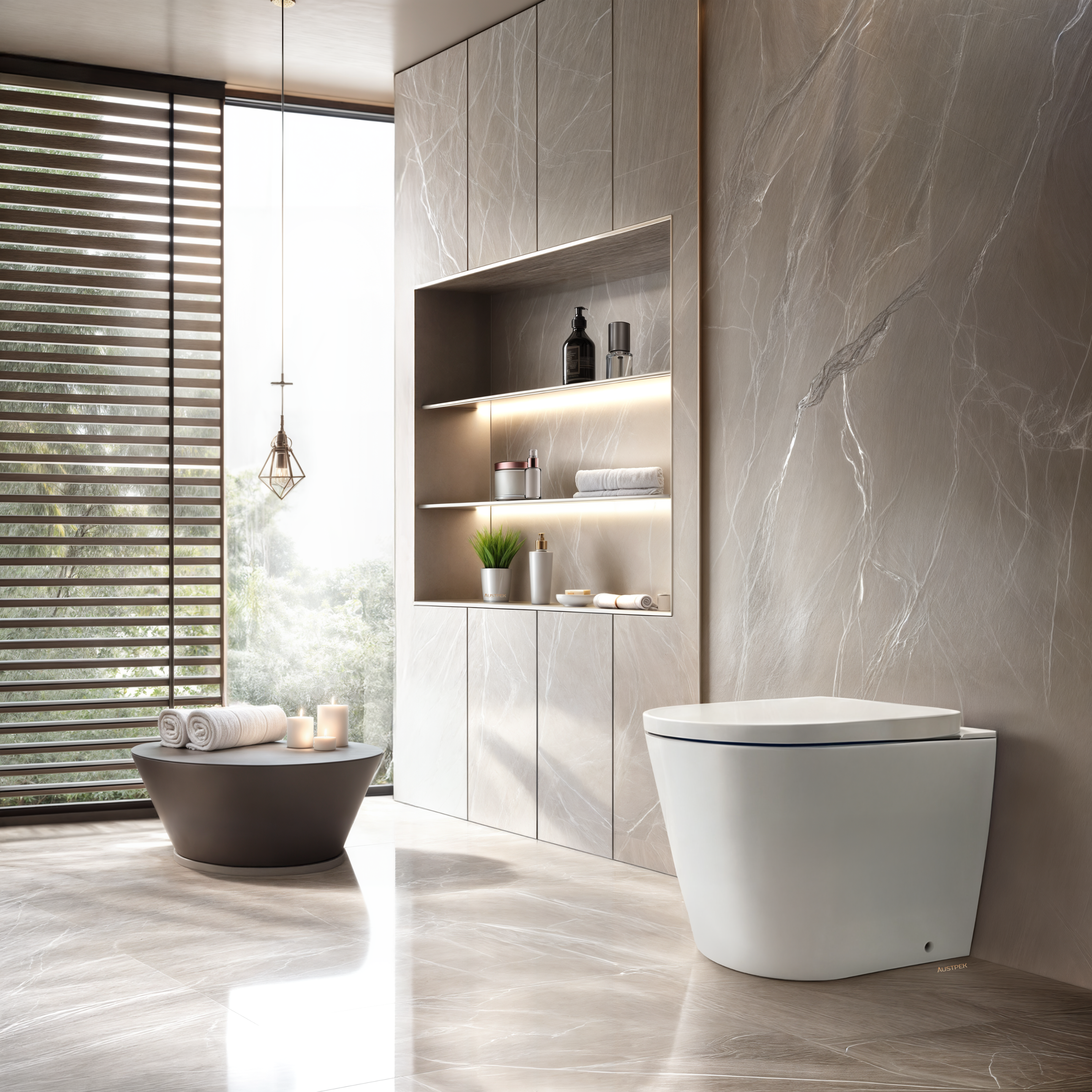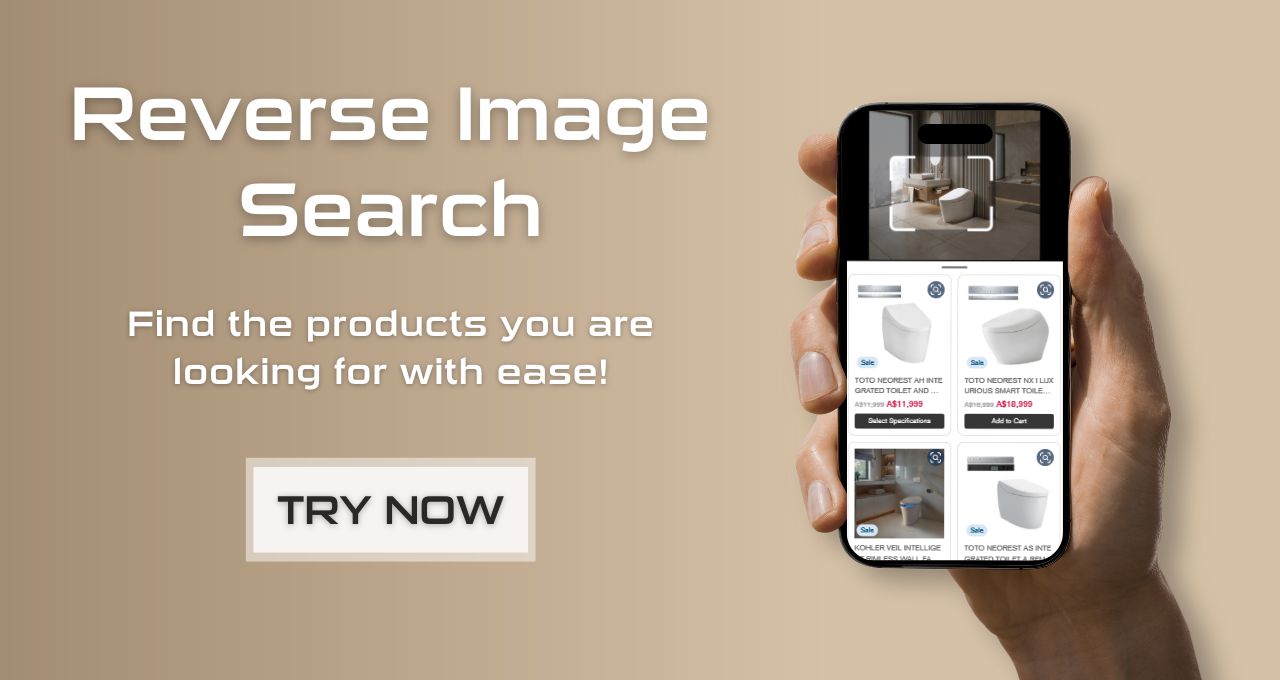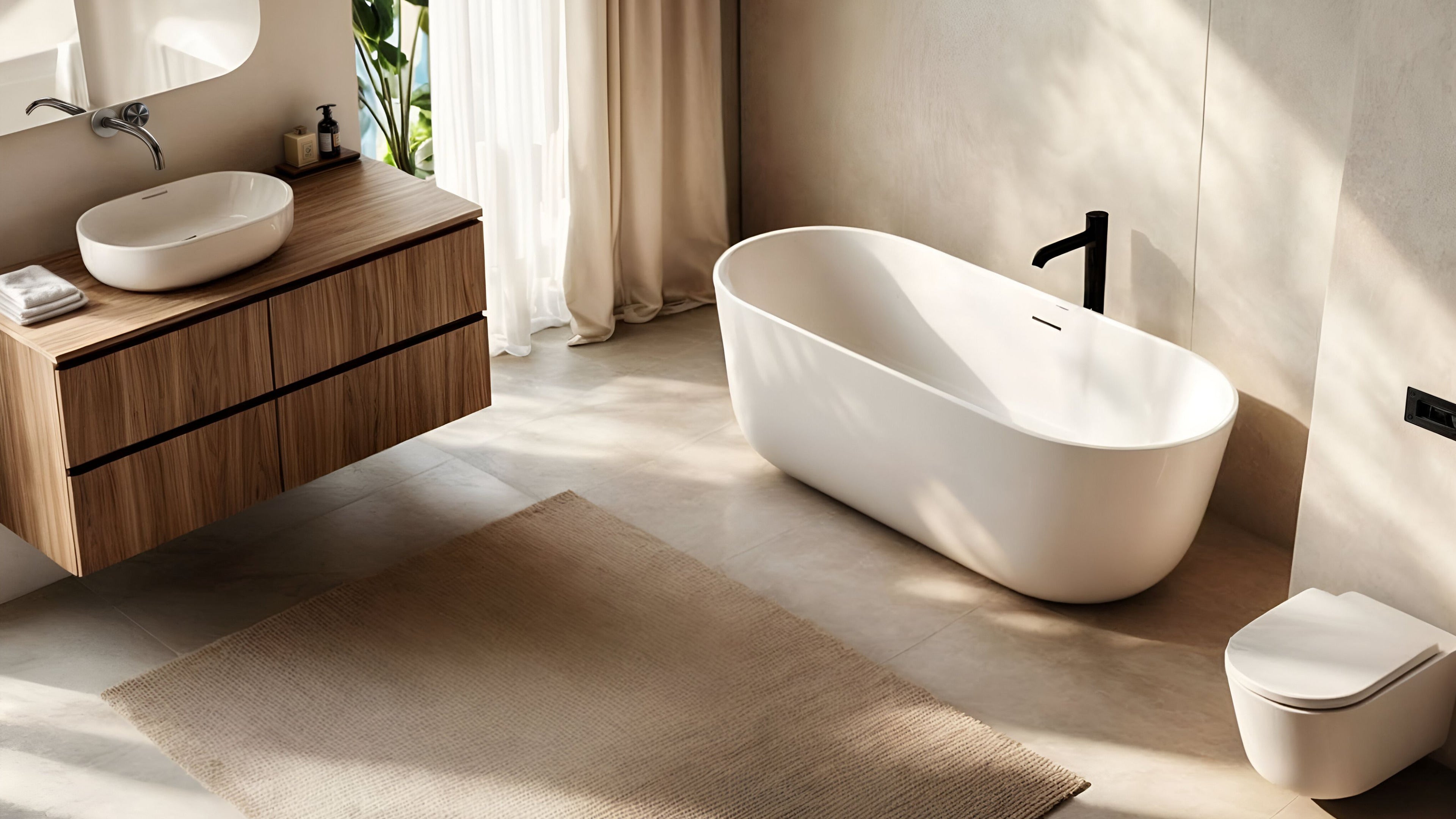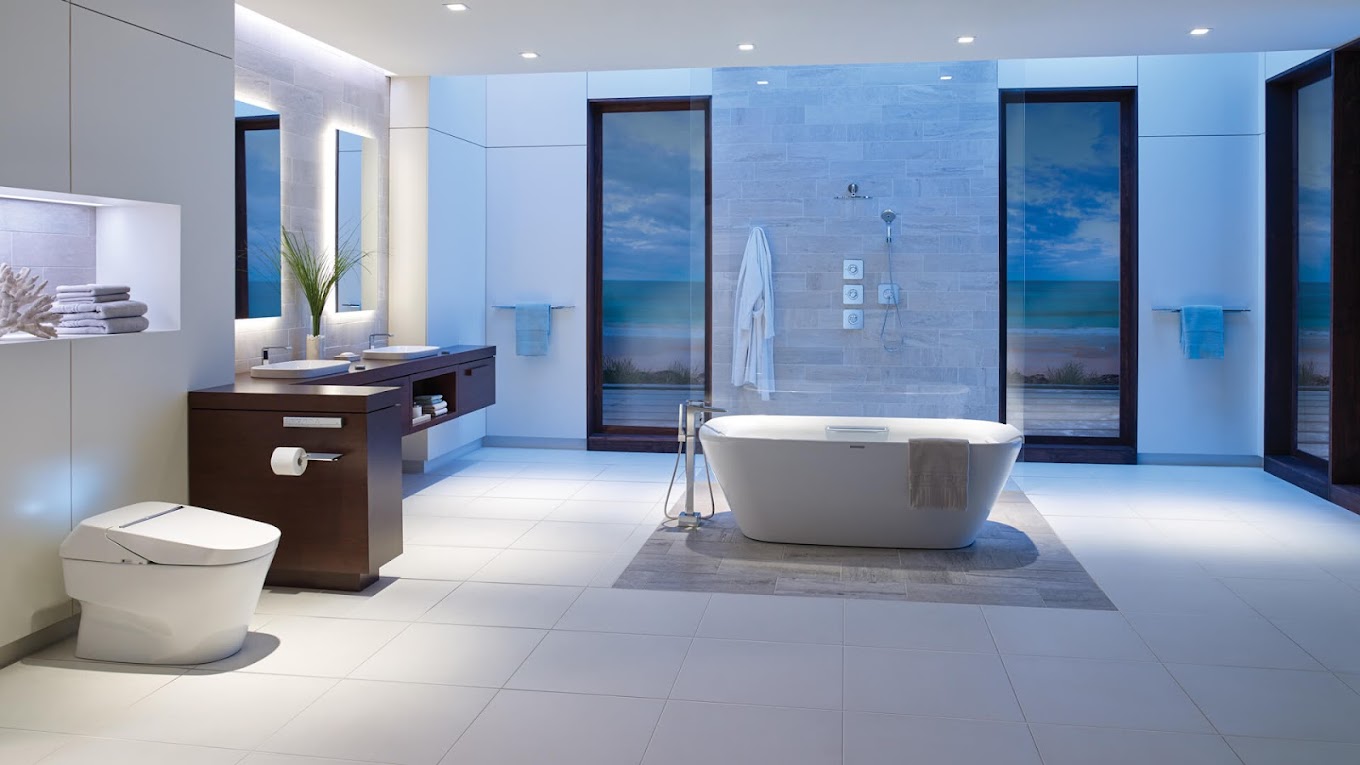Choosing the right toilet might not seem crucial until you’re faced with replacing one or renovating your bathroom. Your toilet choice can significantly impact your daily life and the overall design of your bathroom.
This guide covers everything you need to know about selecting the perfect toilet, including the crucial factors to consider for bathroom renovations. We’ll also explore price ranges and help you understand which options offer the best value for your situation.
We’ll cover six main types of toilets: Back to Wall Toilets, Close Coupled Toilets, Rimless Toilets, In-wall Cisterns, Wall Hung Toilets, and Smart Toilets. Each type offers distinct advantages and may better suit different bathroom layouts, budgets, and personal preferences.
Back to Wall Toilets
A back-to-wall toilet fits seamlessly against your bathroom wall, with its cistern either concealed within the wall or housed in a furniture unit. This design eliminates gaps and exposed plumbing in the bathroom.
Price Range: Entry-level back-to-wall toilets start at approximately $400, mid-range options range from $600 to $1,000, and premium models with advanced features can exceed $1,500. Installation costs are not included.
Close Coupled Toilets
A close-coupled toilet is where the bowl and cistern are connected as one. All working parts are contained within the unit itself, making it one of the most common toilet types in homes.
Price Range: Entry-level close-coupled toilets start at approximately $300, mid-range options range from $500 to $900, and premium models can cost up to $1,200. Installation costs are typically lower than other toilet types.
Rimless Toilets


A rimless toilet does not have the traditional rim around the inside of the bowl. Instead of water flowing from underneath the rim, it flushes directly around the bowl.
Price Range: Entry-level rimless toilets start at approximately $500, mid-range options range from $700 to $1,200, and premium models can exceed $1,500. Installation costs are similar to standard toilets.
In-wall Cisterns


An in-wall cistern is a concealed toilet system where the cistern is installed inside the wall cavity, with only the flush buttons visible on the wall and the toilet pan mounted to the floor.
Price Range: Entry-level in-wall cisterns start at approximately $600, mid-range options range from $800 to $1,500, and premium models can exceed $2,000. Installation costs are higher due to the specialised work required.
Wall Hung Toilets
A wall hung toilet is mounted to the wall with no contact with the floor, supported by a strong frame hidden inside the wall cavity. The cistern is also concealed within the wall.
Price Range: Entry-level wall hung toilets start at approximately $800, mid-range options range from $1,000 to $2,000, and premium models can exceed $2,500. Installation costs are higher due to specialised wall mounting requirements.
Smart Toilets


A smart toilet combines modern technology with bathroom comfort. It features automated functions and enhanced hygiene options. The system typically includes built-in bidet features, automatic flushing, and customisable settings.
Price Range: Entry-level smart toilets start at approximately $1,500, mid-range options range from $2,500 to $4,000, and premium models can exceed $6,000. Installation costs are higher due to electrical and specialised plumbing requirements.
Types of Toilet Pan and Bowl Shapes
When buying a toilet, you'll need to know about different pan shapes and how they connect to your plumbing. Here's what you need to know about the main types you'll find in shops.
S-Trap Toilet Pan
Most Aussie homes have S-trap toilets. These connect to a pipe that goes straight down through your bathroom floor. The pipe curves in an S-shape, which keeps a bit of water sitting in the bend. This water stops any nasty smells coming back up from the sewers. If you're replacing an old toilet, you'll probably need an S-trap model since this is what most Aussie homes are set up for.
P-Trap Toilet Pan
P-trap toilets are less common in Australia. Instead of going down through the floor, these toilets connect to a pipe that goes straight back through your bathroom wall. The pipe makes a P-shape bend, which works the same way as an S-trap to keep smells at bay. You might need a P-trap toilet if your plumbing comes out of the wall rather than the floor, which sometimes happens in older places or
Bowl Shapes
The bowl is the main part of the toilet where the water sits. You can choose from:
-
Regular bowls with a rim around the top where the flush water comes out
-
Rimless bowls which are newer and easier to clean since there's no hidden channel for dirt to build up
-
Box rim designs that have a squared-off channel around the top for the flush water
Before You Buy Make sure you measure from your bathroom wall to the middle of your toilet's waste pipe (we call this the 'set-out'). Most S-trap toilets need about 140-165mm, but some toilets come with connectors that can adjust if your measurements are a bit different. If you're not sure, it's worth getting a plumber to check before you buy.
Pro Tips for Choosing Your Perfect Toilet
When it comes to picking the right toilet for your home, consider these key factors:
Budget Planning
-
Entry-level options: Close-coupled toilets (starting from $300) are great for basic renos or replacements.
-
Mid-range choices: Back-to-wall or rimless toilets ($500-$1,200) offer better features and modern designs.
-
Premium options: Smart toilets or wall-hung models ($1,500+) are ideal if you want luxury features and are planning a long-term investment.
Keep in mind that toilet prices can vary significantly depending on where you shop and which brand you choose. We recommend browsing Austpek's toilet collection to find options that best match your budget and style preferences. Our range includes toilets across all price points, making it easier to compare features and find the perfect balance between cost and quality.
Design Considerations
If you’re working with a small bathroom, consider space-saving options like back-to-wall toilets or wall-hung designs. For larger bathrooms, you might prefer the comfort and style of smart toilets or in-wall cistern systems.
Remember Your Plumbing
Always check your existing plumbing setup – whether you need an S-trap (floor connection) or P-trap (wall connection) will affect your choices. Getting these measurements wrong can be costly to fix later.
Get Expert Advice
Before making your final decision, it’s worth getting a tradie to:
-
Measure your bathroom’s set-out correctly.
-
Check if your chosen toilet suits your plumbing configuration.
-
Provide an accurate quote for installation.
-
Identify any potential issues before they become problems.
Planning a full bathroom renovation?
Consider working with a bathroom renovation specialist who can help coordinate your toilet choice with other elements like tiles, tapware, and overall bathroom design. They can often spot opportunities and challenges that might not be obvious to the average DIYer.






